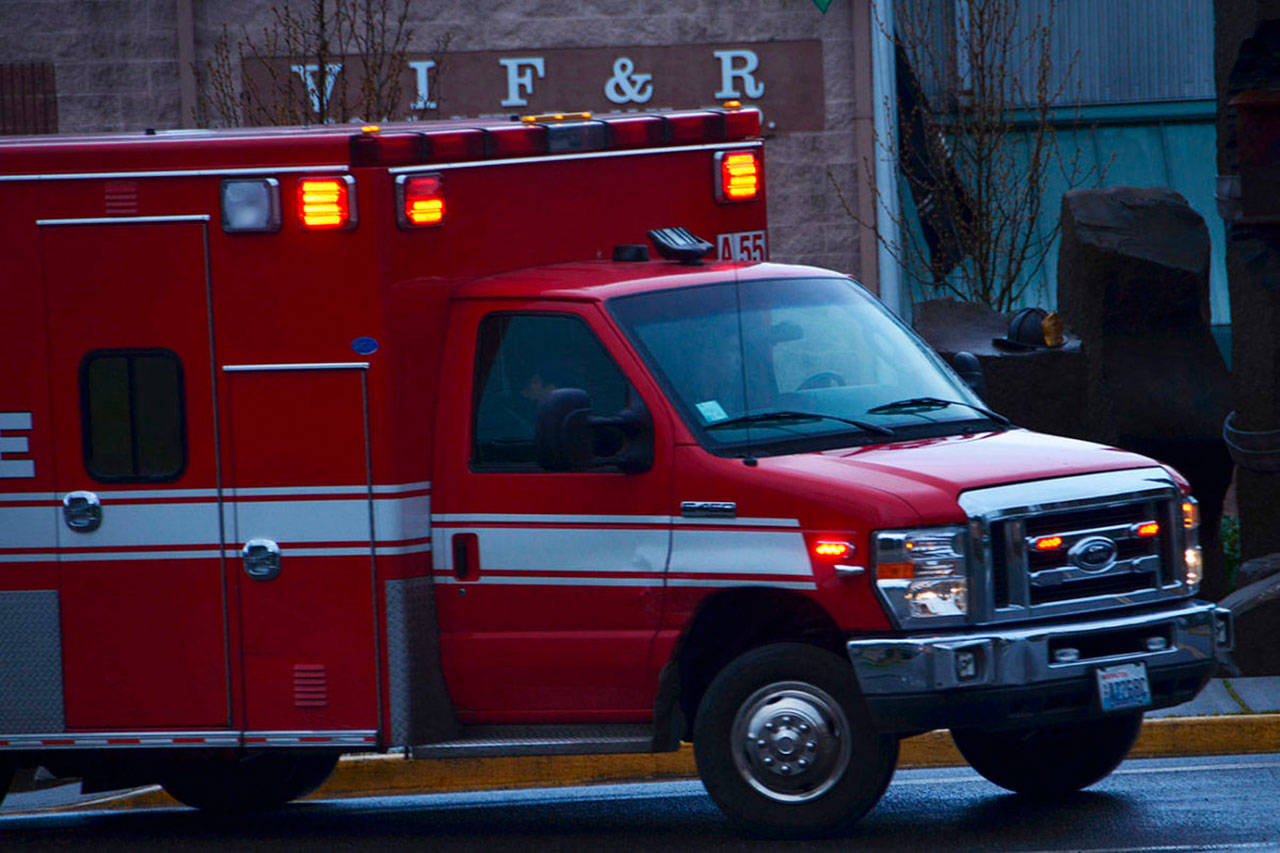More than a year after the Vashon fire district began charging for ambulance transport to area hospitals, those fees are back in the spotlight, with commissioners exploring charging insurance companies only, not individuals.
A handful of islanders attended last week’s fire commissioners’ meeting and raised concerns about the fees, saying that they were concerned the charges would prevent people from calling 911 when necessary. Meanwhile, fire district officials say the fees provide important revenue for the district, but should not be an impediment to people calling for help when they need it. The commissioners stressed at the meeting that the district will not send anyone to collections for an unpaid bill, but are now reportedly considering changing their billing practices so that insurance companies would continue to be billed; patients would not be responsible for any remaining balance.
On Monday of this week, Vashon Island Fire & Rescue (VIFR) board chair Brigitte Schran Brown said that the commissioners need to evaluate that possibility further, including the legalities of doing so, with a decision expected likely late this month.
“The most critical issue is that no one ever worry about calling 911, that they always call if they need to,” she said.
The fee-for-transport issue has come to the fore nearly a year and a half after fees were implemented in part because islander John Simonds, a frequent critic of the fire district and of fee-for-transport in particular, has recently brought up the issue in a variety of forums, including holding up signs about his concerns at the main intersection in town.
At last Wednesday’s meeting, commissioners fielded concerns from him and others, including Jade Grace, who said she believes charging for transport could be detrimental.
“What about the people who do not call you because of this cost?” she asked. “The issue is this is an emergency service that needs to be provided. People will end up not calling you. And I have been close myself, and I know someone who did not call,” she said.
Similarly, islander Steve Graham mentioned the island’s limited medical services, with no urgent care facilities or emergency rooms nearby.
“911 is our medical service,” he said, “If you put barriers in front of 911 for people, that’s harsh.”
VIFR Chief Charlie Krimmert responded that he understands the concern, but his perspective is different, noting that the work of the fire department is labor intensive and requires expensive equipment.
“What you are perceiving as barriers, I perceive as fiscal responsibility so that you have those services in 5, 10, 15 years,” he said.
Krimmert also said he intends to provide more education about the district’s policy, including sharing information in The Beachcomber and on the districts’ website.
Longtime commissioner Dave Hoffmann noted that when the district was so thinly staffed that EMTs routinely transferred people to a private ambulance at the Fauntleroy dock, patients still had a bill to contend with, but their money went to the private company, not to supporting emergency services on Vashon.
Commissioner Candy McCullough also addressed the concerns she heard.
“If you need us, call us. If you can’t afford it, don’t pay the bill,” she said, stressing that point again. “If the bill comes and you don’t have the money, burn it.”
Krimmert was not in full agreement with that position, saying after the meeting that he believes people should pay to the best of their ability.
“My position is we stepped up to provide service, the patients should do the best they can to support the district,” he said.
He also said he does not want anyone to be truly burdened by a bill.
“My job is to take care of people,” he said. “I don’t want them not eating to pay me.”
It is common for fire districts to charge for ambulance transport, and many insurance companies cover all or most of the costs. Medicare, for example, covers 80 percent of medically necessary transports, as do many private insurance plans. Patients on Medicaid are covered in full.
Faced with a dire financial situation and a dwindling number of responders, the district began charging for transports in July of 2017. Krimmert said at the time that he wanted to use the income to help pay for more staff in a program for part-time firefighters/emergency medical technicians (EMTs) that he developed.
Vashon Island Fire & Rescue charges $700 plus $15 per mile for each transport. At the time the district announced the new policy, Assistant Chief Bob Larsen said that amount was the median of the regional standard.
The charges apply only to transport provided by EMTs for “basic life support” — situations that are not life-threatening. There is no charge in life-threatening emergencies when patients are transported via ambulance by paramedics. There is also no charge for EMTs to evaluate and assist people in their homes or transport them to an island clinic.
When the district first announced it would begin charging, Krimmert estimated it would bring in $300,000 per year to help support the part-time program. Following the meeting, Krimmert said so far this year, the district has provided 442 transports, invoiced $430,000 and has received payments of $181,000. Per insurance contracts, $144,000 has been disallowed, and $97,000 is still pending. Uncollected bills account for another $7,000. Krimmert said he will further evaluate the numbers, but is pleased so far.
The next commissioners’ meeting will be at 6:30 p.m. Thursday, Dec. 27.



